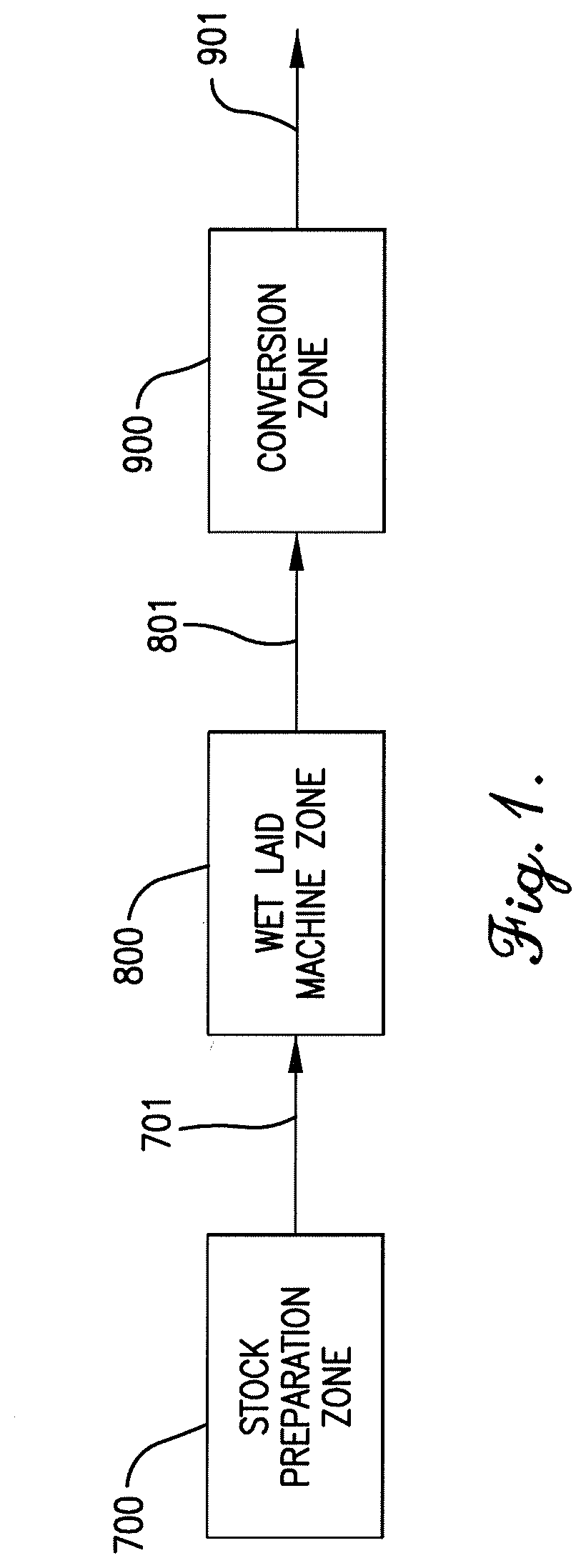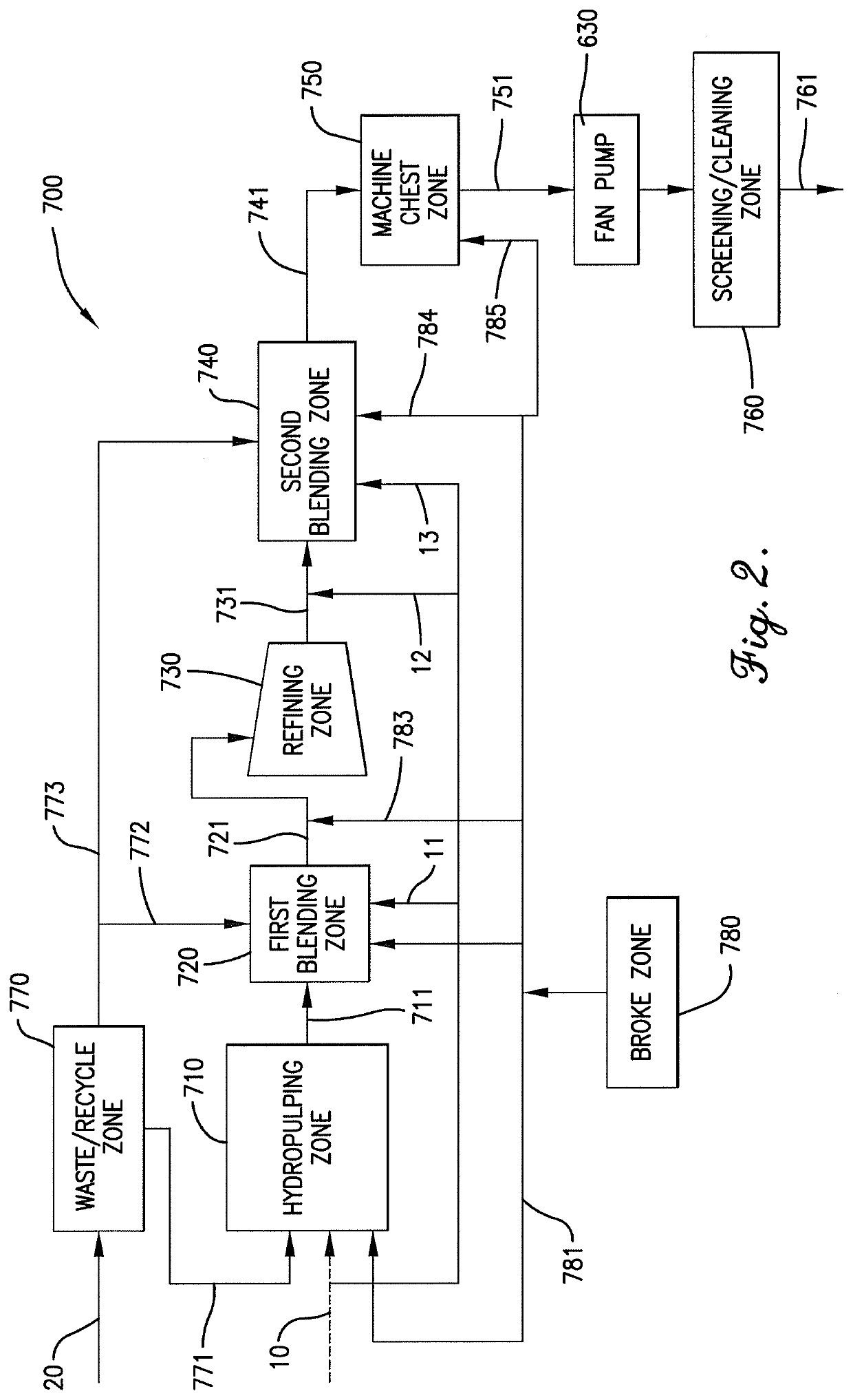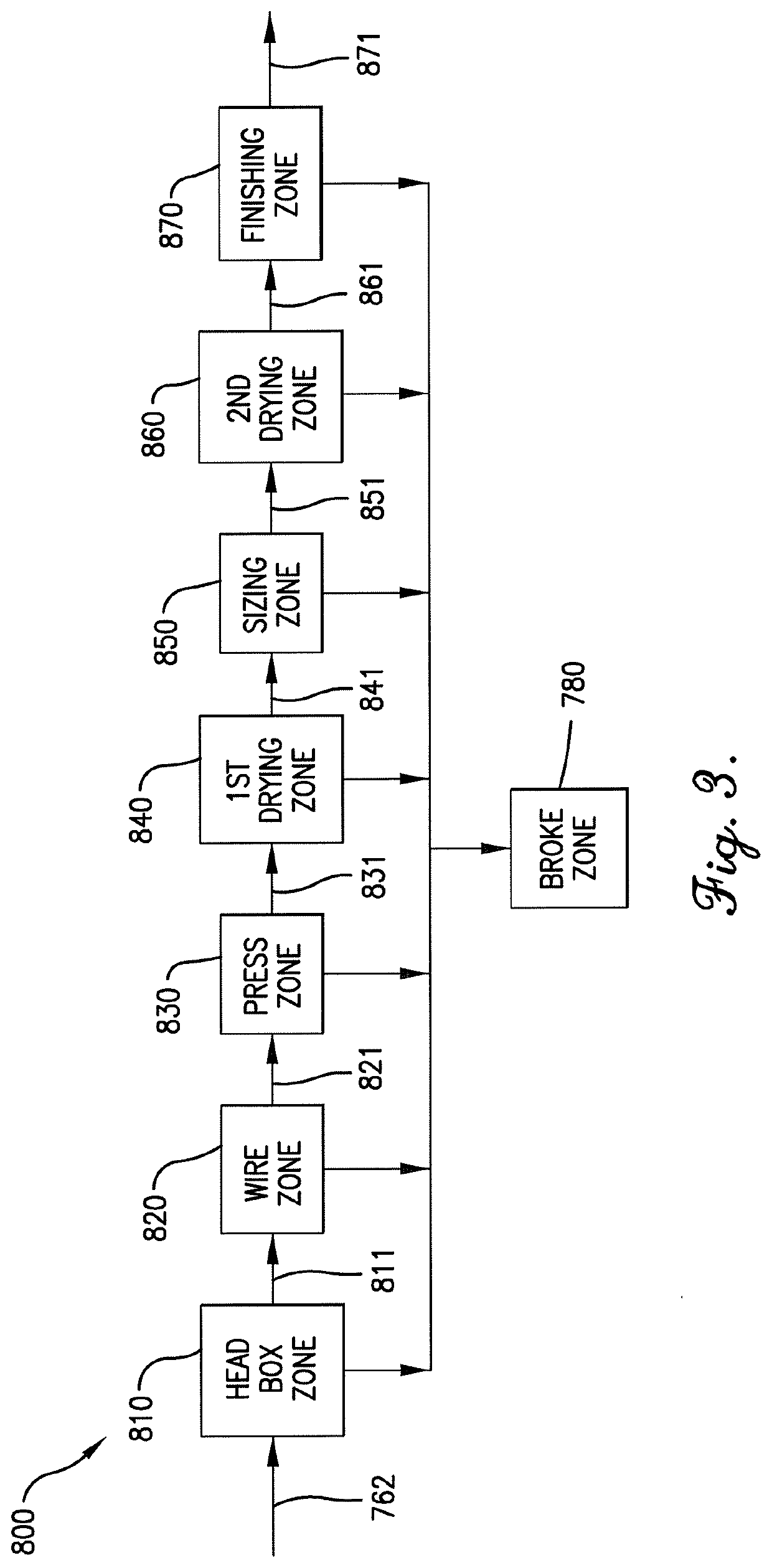Compostable wet-laid articles comprising cellulose and cellulose esters
a technology of cellulose and cellulose esters, which is applied in the field of compositions and wet-laid articles, can solve the problems of increasing energy costs
- Summary
- Abstract
- Description
- Claims
- Application Information
AI Technical Summary
Benefits of technology
Problems solved by technology
Method used
Image
Examples
example 1
nage Analysis: Canadian Standard Freeness and Williams Slowness
[0716]In this example, the effect of CA staple fibers on the Canadian Standard Freeness (CSF) of the furnish composition is reported. The CSF is a measure of the drainage performance of a pulp slurry.
[0717]Lab 1 analyzes the Lab1 finished pulp slurry samples via Canadian Standard freeness test. Lab 2 analyzes the Lab 2 finished pulp slurry samples via Schopper-Riegler Freeness and converts the results to the Canadian Standard Freeness using a TAPPI table.
[0718]Differences between Lab 1 and Lab 2 controls are designed to impart different refining energies to the controls. Lab 1 uses a 5 lb. weight while Lab 2 uses a 12 lb. weight (5.5 kg)—both for 15 minutes in a Valley Beater. The additional refining energy at Lab 2 results in lower Canadian Standard Freeness results—particularly in the control samples and the co-refined samples. The results are reported in Table 10.
[0719]The CSF value of the control for Method 1, Lab 1 ...
example 2
Slowness
[0724]The Williams Slowness test method is described as follows:
[0725]This method describes a procedure for determining the time (sec.) required for 1000 ml of 0.3% consistency pulp slurry to pass through a known square area of a screen. This method is generally applicable to any wet laid furnish useful in the making of a paper sheet. The Williams Slowness Drainage apparatus, shown in FIG. 39, permits water flow from one side of a Williams Drainage Screen through to the opposite side. The specimen holder is a metal square 10.16 cm×10.16 cm (4 in.×4 in.) which encloses a wire mesh circle 8.26 cm (3.25 in.) in diameter clamped to a flat base plate of the same or bigger size. The area of paper specimen exposed to water flow is 53.56 cm2 or (8.29 in2). The metal parts should preferably be a brass or other corrosion-resistant material.
[0726]A 2 15 / 16 in. diameter cork with a cord attached to top is provided to lower and remove from the apparatus cylinder. The timer measures secon...
example 3
[0733]Thickness is measured in both Lab 1 and Lab 2 by averaging 4 thickness measurements at least 1 inch in from the edge near the midpoint of each side of the handsheet. The thickness of the handsheets is set forth in Tables 13-14.
TABLE 13Thickness (mm)Method 1, Lab 1Method 2, Lab 14%16%4%16%4%16%4%16%Variant0%CRCRPAPA0%CRCRPAPAControl0.1560.125CA10.1700.2100.1800.2310.1310.1570.1380.179CA20.1670.1940.1690.2080.1340.1500.1480.154CA30.1700.2040.1740.2530.1290.1470.1360.185CA40.1740.2090.1860.2520.1340.1570.1520.184CA50.1640.1890.1670.2170.1320.1490.1410.168
TABLE 14Thickness (mm)Method 1, Lab 2Method 2, Lab 24%16%4%16%4%16%4%16%Variant0%CRCRPAPA0%CRCRPAPAControl0.1750.133CA10.1890.2290.1960.250.1390.1690.1510.192CA20.1790.2110.1870.2270.1430.1640.1490.177CA30.1890.2240.1910.2590.1440.1600.1450.199CA40.1940.2270.1950.2620.1450.1710.1610.196CA50.1750.19940.1790.22960.1340.1550.1510.175
[0734]As can be seen from Tables 13-14 and from FIGS. 10-11, with the addition of Adding CE staple fi...
PUM
| Property | Measurement | Unit |
|---|---|---|
| cut length | aaaaa | aaaaa |
| size | aaaaa | aaaaa |
| weight percent | aaaaa | aaaaa |
Abstract
Description
Claims
Application Information
 Login to View More
Login to View More - R&D
- Intellectual Property
- Life Sciences
- Materials
- Tech Scout
- Unparalleled Data Quality
- Higher Quality Content
- 60% Fewer Hallucinations
Browse by: Latest US Patents, China's latest patents, Technical Efficacy Thesaurus, Application Domain, Technology Topic, Popular Technical Reports.
© 2025 PatSnap. All rights reserved.Legal|Privacy policy|Modern Slavery Act Transparency Statement|Sitemap|About US| Contact US: help@patsnap.com



